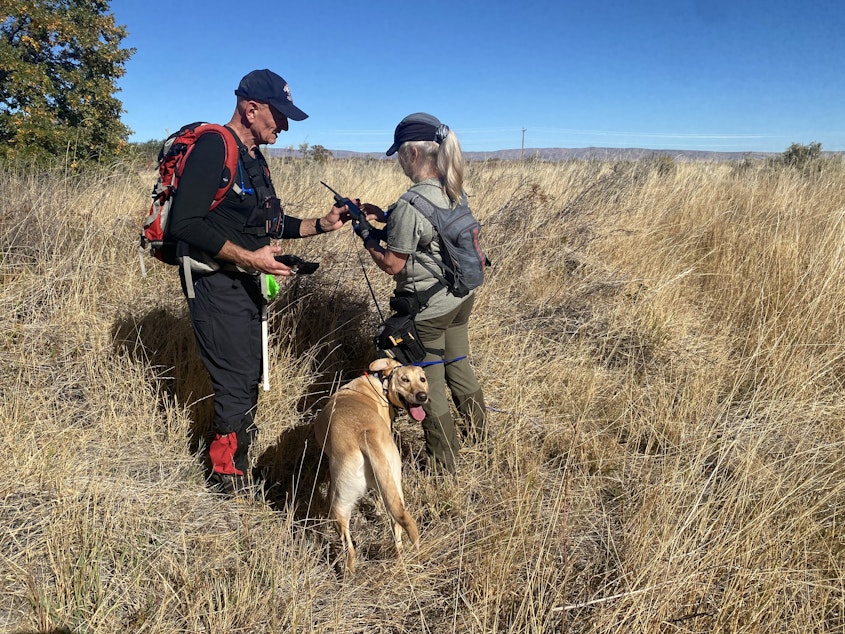With dogs and radar, volunteers search for remains at Mool-Mool, or Fort Simcoe State Park

Since time immemorial, Native Tribes in the Columbia Basin met at a village crossroads called Mool-Mool.
In the wake of the Yakama Treaty of 1855, the site was of continual use as a U.S. military outpost, and for decades, the grounds included a boarding school operated by the Bureau of Indian Affairs, where children from the Yakama Nation were forced to attend.
Today, volunteers and Yakama descendants are searching the park for their relatives' remains.
Throughout the United States and Canada, the discovery of unmarked graves at Native American boarding schools has led to a reexamination of historical sites like Mool-Mool, or Fort Simcoe.
Interest in this particular site began in 2021, after an initiative to uncover unmarked graves was announced by U. S. Interior Secretary Deb Haaland.
Increasingly, searches of these sites are leveraging a method that uses cadaver dogs and ground penetrating radar to discover remains dating hundreds to thousands of years in age.
In recent weeks, a group of volunteers has combed the 200-acre park, working through small sections of bunchgrass. The work is slow, limited to the early hours of the morning, when scent-rich dew blankets the ground.
That dew can contain compounds left by decomposing remains, which is how Kili, a yellow lab, is able to sniff out possible unmarked grave sites. If something catches his attention, he barks and lays down, a signal for handler Suzanne Elshult to mark that particular location.
Sponsored
Elshult, along with search planner Guy Mansfield, historian Emily Washines, and radar operator Jon Shellenberger, believe there could be remains on the site from the ancestral Yakama village site, as well as the Yakima War of 1855 and the site's Native American boarding school, which was in operation from 1860 to 1920.
Mansfield is using historical and oral accounts of the site to determine the most likely locations of remains. He maps those out on a grid that Kili then sniffs through. After Kili has determined a location of interest, Shellenberger then walks the area with a ground-penetrating radar, which can register objects deeper in the ground.
Northwest News Network’s Anna King recently spent two days following the search team as they tried a new method of uncovering unmarked burials at Mool-Mool, or Fort Simcoe State Park. She shared what was found with Soundside's Libby Denkmann.
Listen to the full story by clicking "play" on the audio above.
Read and listen to Anna King's full story, which was produced in collaboration with the Yakima Herald-Republic, here.






